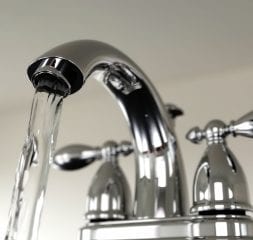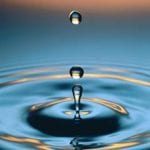The truth about tap water
This could not be further from the truth. Tap water quality may be vastly improved by municipal treatment centers. However, these treatment centers often use the same technology put into practice decades before the current pesticides and herbicides were ever developed. But the governmental regulations on tap water are helpful, right? Not necessarily.
In actuality, the government regulations guiding treatment of tap water contamination are failing. Thousands report environmental violations each year. Additionally, the regulations set by the Environmental Protection Agency (EPA) and Food and Drug Administration (FDA) set maximum contaminant levels (MCLs) that are well above zero.
Tap water contamination is being linked to various types of cancer, dermatological problems, and learning disabilities. In fact, the chlorine used by treatment centers to cleanse the water is actually considered one of the leading causes for the increase in pediatric asthma. Yet the shortsightedness of municipalities and government agencies has led to increasingly pressing health concerns.
There are also contaminants that can affect the quality of tap water after it leaves the water treatment plant. The worst of these contaminants is lead. Lead can enter the tap water through the pipes leading to or within the home. Lead is known to cause severe developmental issues and learning disorders in children, and it is especially dangerous for children and pregnant women.
Alternatives to tap water
There are many ways to eliminate or reduce tap water contamination in your home. Many people turn to bottled water, but this can be expensive and bad for the environment. Plus, the truth is that much of the bottled water for sale today is no different than tap water. Even water claiming to be from “springs” may contain herbicides and pesticides due agricultural and industrial runoff.
Other people turn to water filters for their countertops, or pitcher type filters. While these filters will reduce the level of contaminants and increase tap water quality, they still do not eliminate many of the most dangerous synthetic chemicals found in most tap water. Additionally, while the systems are inexpensive to purchase, the cost of filters make them an exorbitant monthly expense.
Home water filtration systems
Do you want to eliminate tap water contamination in your home? Maybe it’s time to break the water bottle habit and get a home water filtration system. There are many of these filtration systems available. The least expensive systems use reverse osmosis methods for filtering out common minerals such as chlorine, as well as many contaminants. However, reverse osmosis systems will neglect to eliminate many harmful synthetic chemicals.
The best way to improve your tap water quality is through the use of a home water filtration system that uses dual carbon-based filters. Carbon-based filters are the only type of filters that come with a recommendation from the EPA for their effective elimination of harmful contaminants. The use of dual carbon-based filters is more likely to eliminate most of these contaminants than a single-stage filter alone. In fact, multi stage filters eliminate up to 98 percent of the contaminants found in most municipal tap water.
Photo Courtesy of Idea Go / FreeDigitalPhotos.net




